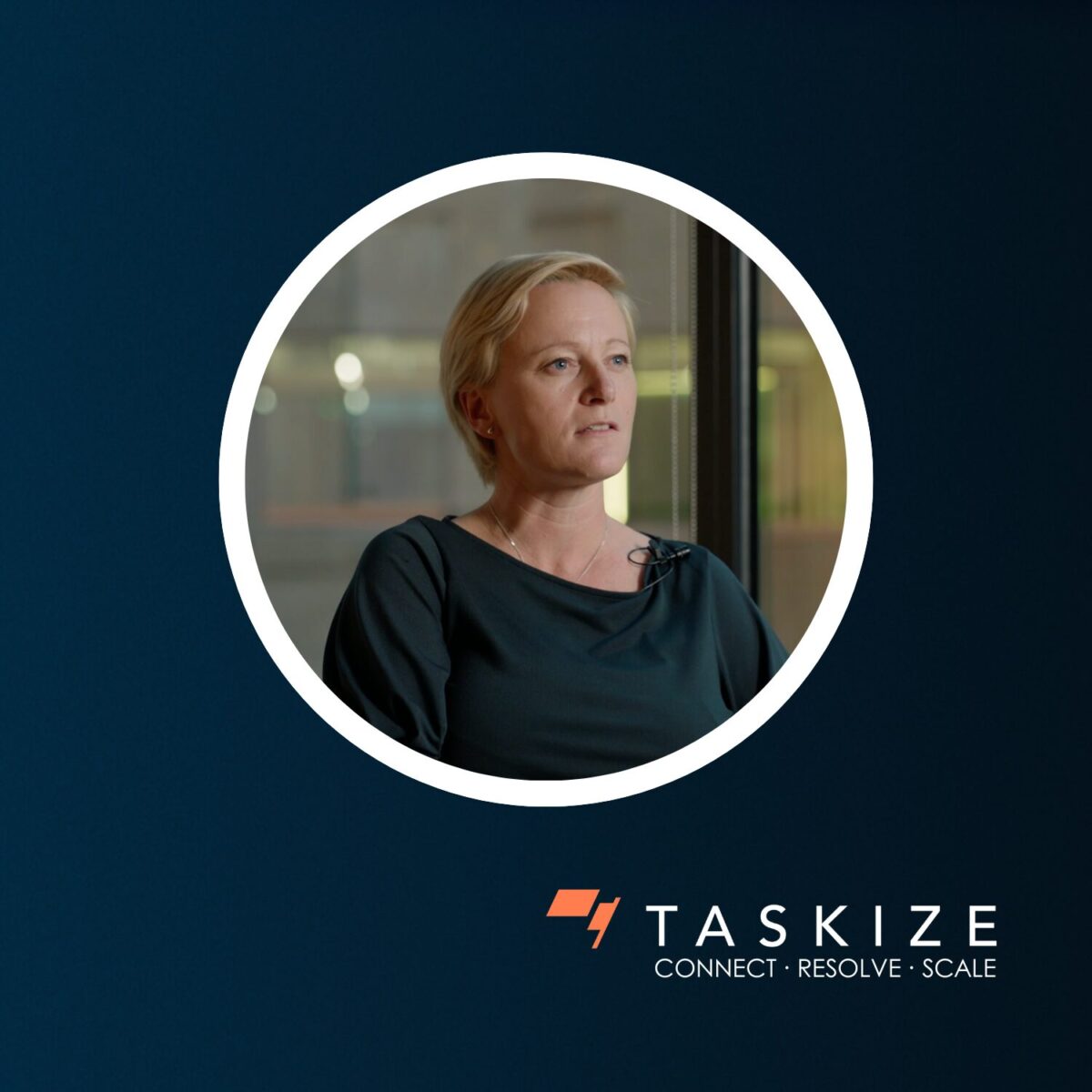People & Culture
This is the second of a three-part series about recent innovations in operations. The series will aim to help you get up to speed with Robotic Process Automation, Chatbots and Artificial Intelligence from the perspective of a banking operations leader.
“Chat” is a big little idea, and a new old idea.
I remember chatting with my future wife using the text messaging facility of our University mini-computer, with its green-screen terminals. A few years later Microsoft Windows included Messenger – but this was limited to local network use. Outside of company networks, the Internet was bursting forth, and AOL Instant Messenger may have been the first Internet chat system to really succeed in building a large following of lay users. Perhaps surprisingly, for a long time AOL was the preferred venue for oil traders to discuss deals.
The Simple Messaging Service (SMS) was a unexpected success for mobile telephony operators while requiring less resource from the mobile network than a voice call. Phone companies profited handsomely until third-parties realised that the web-browsing data-packages that had begun to be added to phones could be repurposed for messaging, bypassing SMS, and so WhatsApp was born. This ability to interact freely on-the-go led to an explosion in the popularity of mobile-first chat platforms. There are now hundreds of such tools, but the leaders emerged as Facebook Messenger, WhatsApp, WeChat and Snap Chat. A key success factor for these platforms seems to be that they must be incompatible with every other platform – efforts at interoperability, such as the Jabber protocol, are shunned by dominant players.
This incompatibility seems no more than an inconvenience for subscribers, as most mobiles have a fistful of competing networks installed; Snap Chat for teenagers, Facebook Messenger for social, LinkedIn for business networking, Bloomberg and Symphony for financial messaging. Now you have #Slack for office messaging, which itself is being challenged by Microsoft Teams – both of which aim to overcome the perennial problem of getting teams to work well together. Some networks promise to destroy the evidence of your communications within seconds of delivery, while others promise to retain them for years. So it is evident that each network has gained its own purpose, community and norms. The idea of ‘one network to rule them all’ is idealistic, and simply not necessary or desirable.
With people so conditioned to text-based chat, it’s also now being used to increase the effectiveness of selling. You cannot have missed the numerous “Can I help you” pop-ups that have broken out across the Internet. Technology companies like Intercom and Olark are springing up off the back of this effective way of increasing customer engagement and sales conversions. Chat can be built into all aspects of the customer experience from first-touch to long-term client-servicing. This closes the loop on client interaction and greatly increases the depth of the relationship between the client and the service provider.
It is a logical progression to add chat to the client-servicing armoury of financial services, even in back-office operations. Chat networks have become ‘places’, and people are used to the idea that different places are for different purposes. With that in mind, we have Taskize – a place to share breaks and queries between financial companies, with the sensitivities that brings. Taskize has its unique norms; it’s chats are really trouble tickets to be resolved as quickly as possible, getting the problem solved is more important than the dialog, what someone can do to help is more important than who they are, passing a ticket between team mates in different locations is more important than the depth of the conversation with one individual, knowing who is working the issue minute-by-minute is critical, and being overseen, measured, coached and recorded by managers comes with the turf – there is no expectation of personal privacy for Taskize users – only corporate confidentiality. So, Taskize is the network for people to resolve issues between counterparties.
Operations have known for years that people are a super-flexible resource. But they are expensive, and therefore a finite resource. In customer service this leads to waiting times and subsequent prioritisation of important customers over less important customers. How can this be alleviated in a cost-effective manner? Enter chatbots – a task-centric computer program which interprets and responds to text messages. While a client is awaiting the answer to their question, a chatbot can step-in and attempt to provide the resolution, thereby enabling human operators to deal with issues that cannot be addressed in this way. The best use cases for chatbots are currently data enquiry or process help, which account for a large amount of client-service traffic. Such chatbots can be simply connected to existing line-of-business system API’s to present key data, or to enable key transitions to occur in a transaction.
However, a chatbot is just a kind of smart computer command-line; people used to despise those and that’s why graphical interfaces were invented in the first place! One can foresee the addition of menus into chat as the forces which originally drove people away from text interfaces reassert themselves. Why? The capabilities each service provider offers will be inconsistent; ask a tier-1 firm “Can I download my portfolio” and you will get a different answer than a firm with fewer resources. One of the issues with chat interfaces, even Apple’s Siri and Amazon’s Alexa, is “What can I ask it”. Both companies have resorted to providing sample questions as they try to train their users. If the FAANG companies (Facebook, Apple, Amazon, Netflix, Google) have trouble training their users, what hope have the hundreds of different financial firms with dozens of niche capabilities?
Imagine we create a linguistically fluent chatbot; what happens when a person suspects their query is being answered by a machine? The verbosity will drop-off and social niceties will disappear. No one will care to ask the chatbot if it had a good weekend. I suspect we’ll be back at a menu in no time, but it will be much faster than the IVR systems used on phones. Of course, that’s why restaurants have menus – it’s an efficient way of quickly communicating an array of choices to a variety of customers. The pinnacle of culinary efficiency, MacDonald’s, is showing the way with its self-select graphical experiences rather than talking to counter staff.
Waiting in the wings is the question of Artificial Intelligence – is it possible to take the person out of the loop entirely? That’s the topic of Part 3 of this series. Google Duplex, is a hugely exciting development in voice-driven AI which seems uncannily human. If you’ve not heard of it, you owe it to yourself to Google it right now. Call-centre managers everywhere are excited that Duplex will breathe new life into tired phone-based client-service systems. It remains to be seen if it can do more than book restaurant tables, and if regulators will permit Duplex to pretend to be a human. Eventually, we will start to see chatbot-to-chatbot interactions. In these cases the computers will be able to instantly recognise that they are interacting with one another and adjust their language back to something only they understand. It should be noted that this represents a new computer security attack vector, as unseen AI’s duel in the dark of the data centre.
Most financial services firms are wrestling with legacy technology in a heavily regulated environment, even as they dream of a bright future. However, there are small changes which can be made to get them on the right course and which will deliver immediate benefits. The Pareto principal applies here too, 20% of the changes envisaged can produce 80% of the impact. So I recommend you take a look at what new technology can do for the client-service and inter-company operations which are the source of much cost and frustration in operations. There are quick wins to be had on each step of the journey to the back-office of the future as we strive to connect automation, interaction and intelligence (in part 3).



